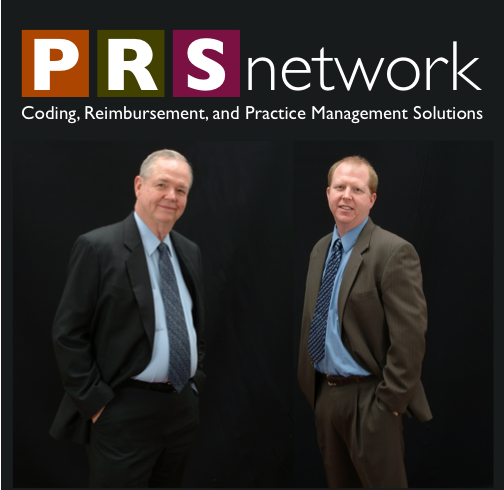Overview
Practice Administrators have a myriad of subject matter areas where they need to be well versed. One area that is complex, ever changing, and holds perils of personal liability is the company retirement plan.
Practice Administrators frequently act as plan administrator. As such, they have fiduciary obligations that involve due diligence in selecting advisors. They also must ensure that they select an advisor that is independent and competent in fulfilling the advisor role. Sometimes plan administrators rely too heavily on the advisor (or more often, broker) to provide full disclosure of the parties involved. This can lead to a breach of fiduciary obligations. This article will help the plan administrator (be it the Physician owner or Practice Administrator) become better informed on issues regarding disclosure of conflicts of interest. Recall that under ERISA, a plan sponsor and plan administrator must not only identify conflicts of interest, they must avoid them.
Things to watch for
Hidden fees
Do any of the plan mutual funds have 12b-1 fees? If so, it may serve as a conflict of interest with the advisor and reduce their ability to assume a fiduciary role. You should ask your advisor why you have funds with 12b-1 fees anyway. This is an ongoing fee paid by the Mutual Fund Company to a brokerage for marketing the fund. When the 12b-1 fee was introduced by the Securities Exchange Commission (SEC) in 1980 it was supposed to help Mutual Fund Companies pay for advertising in order to grow their funds so that some economies of scale could lower the ongoing management costs. We have seen that many of the funds charging 12b-1 fees have grown considerably in size, but we frequently do not see a corresponding reduction in the size of the 12b-1 fee. Alternatively, witness the existence of thousands of no-load funds (with no 12b-1 fees either). Clearly 12b-1 fees are not necessary, and clearly they do nothing to help the consumer. For this reason, the SEC considered repealing 12b-1 fees in 2004. In parallel with this, a bill was introduced – The Mutual Fund Reform Act of 2004. The repeal of rule 12b-1 was contained within the bill but it did not pass. As an investor, you should know that once a broker sells a mutual fund with a 12b-1 fee, they continue to receive 12b-1 fees annually, as long as the fund is held. Over the years, this will have an impact on returns because you are charged the 12b-1 fee directly by the Mutual Fund Company. Make sure you include the 12b-1 fee in your comparisons of mutual funds – or better still, avoid mutual funds with 12b-1 fees, since there is no evidence to support the claim that funds with 12b-1 fees produce higher returns.
Commissions
If any products inside the plan are mutual funds with class A, B or C, your participants are paying sales loads (commissions). Leaving aside for a minute that there is no evidence to conclude that mutual funds with loads perform better than no-loads, the presence of commissions helps to ensure the advisor does not take much (if any) of the fiduciary responsibility due to conflict of interest. You’re on your own here.
Setting yourself up to pay a higher tax rate
As practice administrator, you may have been hired because of great business breadth and depth, but you probably were not hired to be a tax expert. We are not suggesting you need to be either. We are, however, suggesting you be mindful of some basic tax implications to retirement plans, and more importantly, that you hire an advisor that educates the plan participants about the impact to their investment on poor tax planning. Here is a rudimentary fact that is frequently not taken into consideration. Federal personal income tax rates on long term capital gains, and on dividends, are only 15%. Yet, the same investments (those that are equity-based i.e., stocks and mutual funds holding stocks) held inside your company retirement plan will be taxed at personal income tax rates when withdrawn. Most physicians are in the 33% federal personal income tax bracket or higher. Would they rather pay 33% or 15% in taxes? Some of you may be thinking that this argument does not hold water because the purpose of the retirement plan is to defer income tax to the future, when personal tax rates are assumed to be lower. Good point. Now consider this: if the physician is planning on living comfortably in retirement, they are still going to be drawing enough from their retirement plan to pay more tax than 15% in taxes (hopefully, so will you). In addition, the current status of the nation’s fiscal situation (ballooning debt, aging population, plummeting national savings rate, lowest personal income tax structure in decades, pending social security & medicare solvency crises) mean there is considerable chance we will see higher marginal income tax rates in the future. We’re not saying you should not hold any equities in your retirement plan (read: deferred savings plan), but you need to be aware of the tax implications of your asset allocation decisions. Certainly your advisor needs to educate plan members about this and other facts.
Preferred funds
Ask your advisor if they or their company receive any remuneration in any form (trips to Maui, BMWs, Rolexes etc) from fund companies. There are brokerages that have charged mutual fund companies for the privilege of being called a preferred fund company. This status may lead to improved access to the sales force (brokers). Failure to disclose this- or any similar arrangement leads to a clear conflict of interest.
Trading costs
When a plan participant sells mutual fund shares (redeems them back to the fund company), they do not directly incur a fee/cost for the trades that must be done to sell the stocks that make up the fund. Instead, the remaining fund holders pay for it. In this manner, any short-term trading of the fund hurts returns of the long term fund holders. For Mutual Funds with high turnover (a great deal of buying & selling), fund holders may see up to 1% of the value of the fund lost annually to trading costs. Trading costs are not disclosed in the fund prospectus so the investor has no ability to know in advance what will be lost to trading costs. You may, however, ask for the “Statement of Additional Information” (SAI). Sometimes the SAI will disclose trading costs for the fund in a previous year. Look for funds with trading costs as low as possible – ideally less than 0.4% of the fund’s value per year. This should be something your advisor analyzes and discusses with you.
Broker or Advisor
You must know whether the person(s) you are working with to provide the plan are brokers or advisors. Ask them to disclose their role in writing. Brokers will vehemently deny any fiduciary responsibility when among themselves, but some have been known to muddy the waters when it comes to a clear distinction of their role when they are in front of clients. The Financial Planning Association has brought suit against the SEC in allowing Merrill Lynch to continue to call their brokers advisors. An Advisor is an individual licensed to provide investment advice and representing a Registered Investment Advisor. Advisors have a legal obligation to act in the best interest of their client (1940 Investment Advisor Act). Brokers do not.
AMENDMENT January 2006: The Securities Exchange Commission (SEC) has implemented a new rule whereby brokers that wish to retain accounts with financial planning services or discretionary authority must become licensed as an investment advisor representative. As such, these broker-advisors will be subject to the Investment Advisor Act of 1940 for the first time. Unfortunately, these individuals are only subject to the higher standard of care (of the Advisor Act 1940) when acting on accounts with discretionary authority or when offering financial planning services. This may frequently not be when they are working with your practice to provide a group retirement plan. When not acting as an advisor, the broker must provide a disclosure statement indicating that the interests of the brokerage and the client may not always be the same. Apologies for the confusion. You may wish to contact the SEC for further insight. Perhaps a good question might be – who benefits from confusion with this new rule? I’m fairly confident that confusion does not benefit the public.
Other sources of conflict:
ERISA states that you must have an advisor that is independent and validate the product providers (mutual funds companies) performance results. This means your advisor must not be in any way affiliated with the mutual fund companies represented in the plan- unless you hire a separate independent advisor.
If the advisor recommends products that are proprietary, you need to understand the implications to your fiduciary role. We recommend avoiding proprietary products because they serve to lock-in the client by preventing them from transferring those assets elsewhere. Does this practice serve your participants well, or the brokerage?
Plan sponsors and plan administrators must not accept services that are not offered to all participants- if the services are offered within the plan. A clear ERISA violation, but some brokers try to offer this as a selling feature.
Summary
We have provided insight into areas that may become problematic for plan sponsors and administrators. Many of these areas are not disclosed very well and indeed should be. The securities industry is under fire from regulators (Spitzer et al) in part because of poor disclosure, and in part for failure to perform the role of fiduciary. It is our hope that the pressure to reform and provide improved transparency continue.
Jeff Seymour CFP® BSc. Eng. is Managing Director of Triangle Wealth Management LLC. His practice works solely with Physicians and Dentists in ERISA consulting, practice retirement plan implementation, private wealth management, asset protection, and procurement consulting. He may be reached from their website (www.doctorwealth.com ), or at 919 469 3600.



